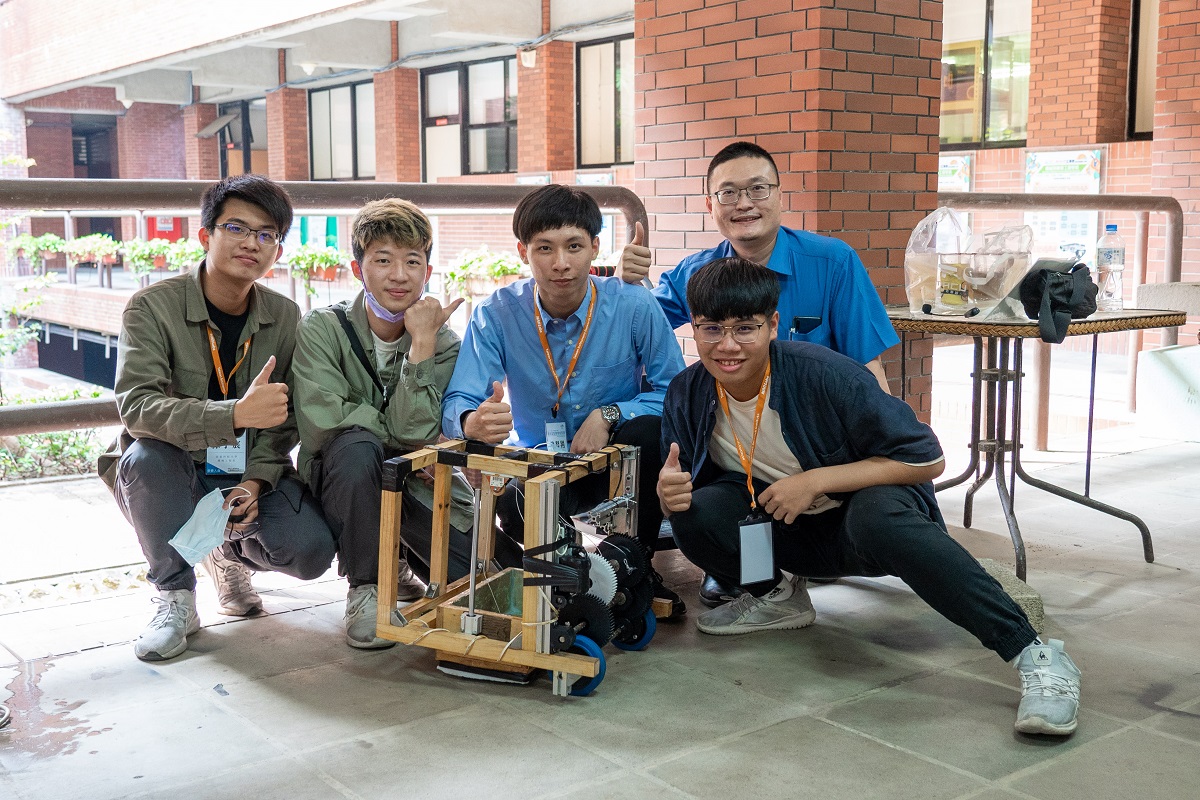The Ministry of Science and Technology (MOST) actively promotes the research of cutting-edge technologies, and thus emphasizes recruiting researchers and fostering their talent in its policies. NARLabs' Taiwan Instrument Research Institute (TIRI), under the administration of MOST, is also committed to nurturing the talent of those with a passion for designing scientific instruments. To carry out this mission, TIRI, in collaboration with the American Society of Mechanical Engineers (ASME) Taiwan Section, held the NARLabs Smart Machinery Competition for students on March 19. On the competition day, young mechanical engineering experts from higher education institutions around Taiwan gathered at National Sun Yat-sen University's College of Engineering to take on the challenge of using water power to make a robot move forward while carrying weight. The competitors demonstrated boundless imagination and creativity, and in the end, a team from Southern Taiwan University of Science and Technology (STUST) won first place in the design category, taking home a prize of NTD$50,000.
The NARLabs Smart Machinery Competition is held annually, and each year's theme is chosen by ASME. The themes are both diverse and practical, with the aim of inciting students to generate creative ideas and integrate those ideas with their knowledge of mechanical technology. The theme of this year's design competition was "H2Go Revisited," and as per the rules, teams could only use the potential energy of water to make their robot move forward. However, they could also control some of the robot's motions using battery power. The task of the competition was to make the robot carry water to an appointed area within a time limit, and points were earned based on how many trips the robot could make and how many liters of water it could transport.
In addition to the robot's speed and carrying capacity, the teams also needed to consider how to effectively use the potential energy of water to make the robot move forward. This challenge put students' abilities in machine design and applying scientific knowledge to the test. First place in the design competition was awarded to "Southern Taiwan University of Science and Technology," a team hailing from the university of the same name. The team demonstrated precise directional control of the robot, which not only had an excellent carrying capacity, but also fully applied the competition's theme of converting potential energy to kinetic energy. The "Thomas the Tank Engine" team, also from STUST, and National Cheng Kung University's "The Comeback of the Great Mechanical Empire" team won second and third place, respectively, while honorable mention was awarded to National Yang Ming Chiao Tung University's "iTron" team.
For many consecutive years, TIRI and ASME Taiwan have been organizing the NARLabs Smart Machinery Competition for students. This year's competition was supported with assistance from Syntec Technology Co., Ltd. and Taiwan Elite Nano Technology Corp., which are some of the nation's leading instrumentation companies. Together, we work to foster talent in the field of instrumentation research, and through this student competition, we hope to provide a platform for young scholars to use their creativity and apply their scientific knowledge to create new technology. In the future, the innovations of these promising students will further increase Taiwan's technological competitiveness on the world stage.
 A team from Southern Taiwan University of Science and Technology (STUST) won first place in the design category.
A team from Southern Taiwan University of Science and Technology (STUST) won first place in the design category.